- ALL SERVICES
- • Salesforce Consulting Services
- • Managed Services
- • Simplification of Interfaces
- • Data Migration and Processing
- • Architectural Solutions and Scoping
- • Code Review, QA and Support
- • Applications Development
- • Pre-sales and Solutions Consulting
- • Technical Audit and Support
- • Custom Applications Development
- • AI Apps
BLOG ✦ INTERVIEW
The Appearance of the "Salesforce Economy": Stable Profit, New Jobs and Net-Zero
• Date: August 2022 •
Estimated reading time: 7 minutes
Estimated reading time: 7 minutes
Subscribe for more useful content
We promise we'll not spam your mailbox!
By submitting you agree to receive a newsletter from Twistellar. You can unsubscribe anytime.
What's happening at Salesforce isn't just about Salesforce.
- Chief Executive Officer of Twistellar EMEATwistellar has worked with Salesforce technologies for over five years. We've seen businesses with different objectives, missions and services. I can tell you that they range from SMBs to enterprises and represent 10+ industries.
They all have one thing in common: they have chosen to be part of the Salesforce ecosystem, and there is a very good reason for that. The Salesforce Economy is worth joining: I can prove it with numbers and facts.
The appearance of the "Salesforce economy" and its further boom is not the merit of the recent "crazy growth" years.
For a decade now, IDC has been quantifying the economic impact of cloud computing in terms of the revenues it creates for companies and the jobs generated by those revenues. Mind, of course, the coronavirus outbreak that had a positive impact on the development of cloud software and accelerated digital transformation throughout the world.
"Behind the economic engine of Salesforce — and its ecosystem of partners — is the economic engine of cloud computing itself."
Source: IDC, The Salesforce Economic Impact, 2021. White Paper

Worldwide Digital Transformation Software Spending, ($B)
If you take the overall economic benefits of cloud computing and boil them down to the benefits associated with Salesforce and its ecosystem, you get an impressive picture.
Contents:
1. What is the Salesforce economy?
The Salesforce Economy represents the impact of the Salesforce Ecosystem on the world's economy as well as the economies of individual regions and states in the context of financial and socio-economic categories.
So, it includes not only the company's indicators but the whole ecosystem of representatives' performance: consulting partners, ISV partners, and third-party providers brought in by Salesforce customers.
This influence is so widespread that the Salesforce Economy got the status as an officially tracked economy.
Let's dive into some features of the Salesforce Economy and find out what they mean for your business.
2. Stable Profit
According to IDC, the use of Salesforce and its ecosystems cloud services will generate $383 billion in customer base this year and more than double that in 2026 at $724 billion.

Worldwide Business Revenues Generated from the Use of Salesforce Cloud, ($B)
TOP 5 regions with forecasting additional new revenues over $50 billion (IDC, The Salesforce Economic Impact, 2021. Country insights):
- United States $531 bil
- Japan $97.4 bil
- Germany $94.4 bil
- UK $71.6 bil
- India $66.4 bil

Revenue from Salesforce in Denmark by 2026, ($B)
What it means for your business?
When you think of implementing any system for your business, you need to estimate the risks. When you enter the Salesforce ecosystem, you can be sure of its sustainability and constant growth. And there are no prerequisites for a change in this trend.
3. New jobs
The number of jobs in the Salesforce ecosystem by 2026 will increase almost twice. However surprising it may seem, digitalization in this domain does not reduce jobs, yet produces them.
Salesforce is the market leader in customer relationship management (CRM) applications, with a 23.8 percent market share in 2021. It's more than SAP, Oracle, Microsoft, and Adobe's common market share together (Statista).

Worldwide Jobs Generated from the Use of Salesforce Cloud, (M)
Note that there are two classes of jobs (IDC, The Salesforce Economic Impact, 2021):
- "Direct" jobs are those created in the Salesforce customer base from the revenues generated by the use of Salesforce and its ecosystemʼs cloud services.
- "Indirect/induced" jobs are those created in the economy by people filling direct jobs (induced) and by spending on local goods and services by Salesforce and its ecosystem (indirect).
TOP 5 regions with forecasting additional new jobs (IDC, The Salesforce Economic Impact, 2021. Country insights):
- United States 1.45 mil
- India 1.33 mil
- Brazil 1.21 mil
- Japan 440k
- Mexico 421k

New Jobs Generated in Denmark by 2026, (Net)
Check your country indicators here.
What it means for your business?
Joining the Salesforce ecosystem as a customer means generating a demand for which there will always be a supply. This is a developed, competitive market where you can choose a partner that provides services matching your resource capabilities and technical needs. You will always have a choice.
4. Net-zero
Salesforce has made a public commitment to sustainable development, including the United Nations Organization. Last year, Salesforce set up a goal of consuming 100% renewable energy by 2022 with net-zero carbon emissions. 39% of respondents in IDC 2021 research approved that it also helps to support ecosystem's members sustainability goals.

Salesforce commercial, #TeamEarth campaign
What it means for your business?
The migration from on-premises computing to the cloud directly reduces inherent carbon emissions. Salesforce provides you an opportunity to make a contribution to global environmental problem-solving.
5. Effective you, effective economy
So, why do we all need to operate these numbers? Because behind a successful growing business there is a flexible, scalable system. Such as Salesforce:
- 58% reported payback in less than a year after the implementation
- 73% of reported companies said they improved their productivity
- average payback time of Salesforce implementation is 13 months
- the ROI can be 5 times more than the original investment
Salesforce is constantly adjusting to the changing reality. COVID-19 had a tangible impact on the business processes, and now remote work is our reality. Einstein AI, NFT Cloud, Health Cloud, and Slack Connect are great examples of up-to-date software.
The IDC study also finds that Salesforce is driving immense growth for its partner ecosystem, which will make $6.19 for every $1 Salesforce makes by 2026.
Isn't that a significant impact on the economy? Oh, yes. Is it worth joining Salesforce? Well, we think so!
If you have additional questions on how to set it up for your business, feel free to reach out to us for a free consultation
Our deep understanding of Salesforce platform ensures successful handling of projects in any domain
By submitting you agree to receive a newsletter from Twistellar. You can unsubscribe anytime.
Our Articles, News and Salesforce Overviews
Feeling like teaming up with us at Twistellar? We are excited too! Whether you'd like to customize your org, build a bespoke application or integrate a third-party tool, Twistellar is ready to help you.
Get in touch to discuss your Salesforce ideas!

